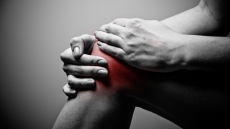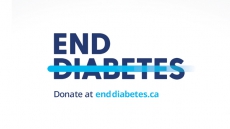Caption: Hearts of BC Foundation directors Joban Bal (bottom row extreme right) & Adrija Chakrabarti (top row, 3rd from right) with Hearts of BC Foundation team
If someone sitting next to you were to suddenly collapse, unable to breathe or respond to you, and only make gasping sounds, would you know what to do?
These are typical signs of a cardiac arrest. This is important to know because eight out of 10 cardiac arrests happen at home or in a public place, according to the Heart and Stroke Foundation. What is concerning is that only one in 10 of these patients survive. But wait! Immediate action in these scenarios can double the chance of survival!
When enough blood does not reach the heart tissue, a person will experience a heart attack, meaning damage to the heart muscle. The heart may still be beating and the person may be conscious. A heart attack may lead to a cardiac arrest, or vice versa. They are related, but they are NOT the same thing, even if we hear the terms used
Cardiac arrest is much worse because the electrical system that controls the pumping of the heart malfunction so it can’t get blood to the brain and other organs. The person will collapse and become unconscious, requiring Cardiopulmonary resuscitation (CPR) and perhaps the use of an automated external defibrillator (AED). Cardiac arrest can occur in anyone, young and old, of any fitness level, and at any time.
Moments following a cardiac arrest, every second is valuable as chances of survival decrease rapidly. Even out of the one in 10 people surviving out-of-hospital cardiac arrests, some will still have brain damage. This can be greatly improved if an AED is already nearby, along with bystanders who can immediately perform CPR until emergency workers arrive.

What is CPR and an AED?
You might have seen CPR as chest compressions and rescue breaths. An AED is a portable device that detects life-threatening heart rhythms and can shock the heart to stop it, allowing the heart to restart its normal rhythm.
Survivors of cardiac arrest are grateful for AEDs and bystanders that performed CPR on them. We believe it should not be a matter of “luck” for anyone in the province having a cardiac arrest to have an AED nearby and a CPR-trained individual on the scene. Fortunately, CPR education can be taught to anyone. AEDs are equipped with easy-to-follow diagrams and automated instructions, and can be used by anyone. The Good Samaritan Act protects anyone with good intentions, trying to help within reasonable measures, from being subject to any legal action against them.
Together, we can take “chance” out of the picture, reduce permanent brain and organ damage, and most importantly, reduce deaths from cardiac arrest. You may be asking: why haven’t we already done this, it is a no-brainer! Many organizations are tackling various aspects of this challenge, but we need your support in improving legislation, increasing AED accessibility, and educating our communities.
We are currently searching for AEDs dispersed across B.C. that are not searchable by emergency services on the provincial database and the Pulsepoint AED app. You can help this cause by learning CPR and helping us connect to AEDs not yet registered into the provincial network. Join the movement online and follow us at @heartsofbc on Instagram, or reach us at heartsofbc@gmail.com.
Joban Bal is a 1st-year medical student at UBC. Adrija Chakrabarti is a 3rd-year student studying Behavioural Neuroscience at UBC. They are both directors with the Hearts of BC Foundation.
PHOTOS: COURTESY OF HEARTS OF BC FOUNDATION






